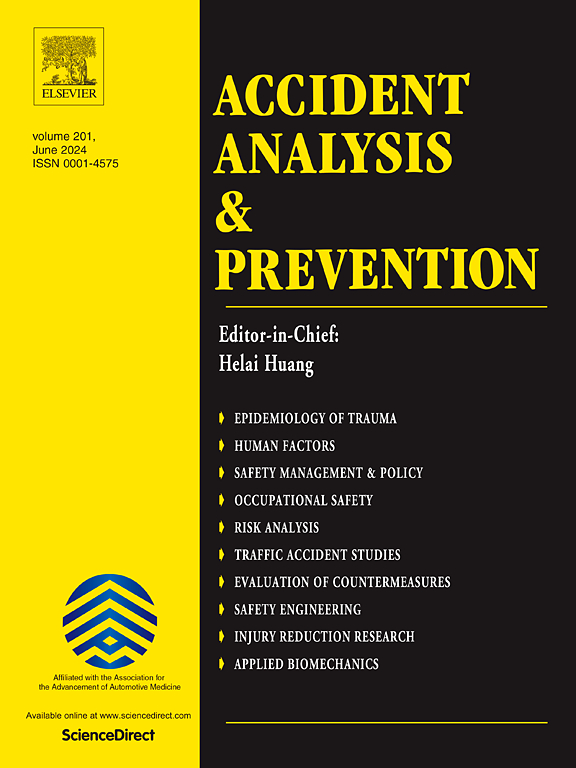Classification of driving simulators validation: A case study using an immersive driving simulator
IF 5.7
1区 工程技术
Q1 ERGONOMICS
引用次数: 0
Abstract
Driving simulators present themselves as tools of high potential for the study of human behavior during the driving task, given their importance in the occurrence of traffic accidents. The use of driving simulators is still on the rise, with the increased number of low-cost desktop-based driving simulations, primarily motivated by research in the intersection of vehicle automation and human factors. However, it is necessary to ensure that the simulators correctly represent the driving task, which is done through the validation process and has been particularly rare in recent years. In this sense, the objective of the present work is to support the validation efforts of low-cost driving simulators in two ways: (i) by proposing a study configuration categorization to guide validation studies and (ii) by presenting the validation of an immersive driving simulation based on the proposed classification. Considering the former, an extensive literature review of existing validation studies was conducted to support this classification’s development. Regarding the latter, data from the same scenario in the real world and in the virtual environment were collected and analyzed. The study also evaluated the occurrence of simulator sickness and the perception of realism in the simulated scenario, which are important elements in the context of low-cost driving simulators. The results show relative validation for the particular simulator analyzed, as well as the relevance of virtual reality for constructing an immersive environment, despite a slight increase in some symptoms of simulator sickness. Although such validation studies apply to a specific context, they broaden the overall reliability of research on driving simulators.
求助全文
约1分钟内获得全文
求助全文
来源期刊

Accident; analysis and prevention
Multiple-
CiteScore
11.90
自引率
16.90%
发文量
264
审稿时长
48 days
期刊介绍:
Accident Analysis & Prevention provides wide coverage of the general areas relating to accidental injury and damage, including the pre-injury and immediate post-injury phases. Published papers deal with medical, legal, economic, educational, behavioral, theoretical or empirical aspects of transportation accidents, as well as with accidents at other sites. Selected topics within the scope of the Journal may include: studies of human, environmental and vehicular factors influencing the occurrence, type and severity of accidents and injury; the design, implementation and evaluation of countermeasures; biomechanics of impact and human tolerance limits to injury; modelling and statistical analysis of accident data; policy, planning and decision-making in safety.
 求助内容:
求助内容: 应助结果提醒方式:
应助结果提醒方式:


